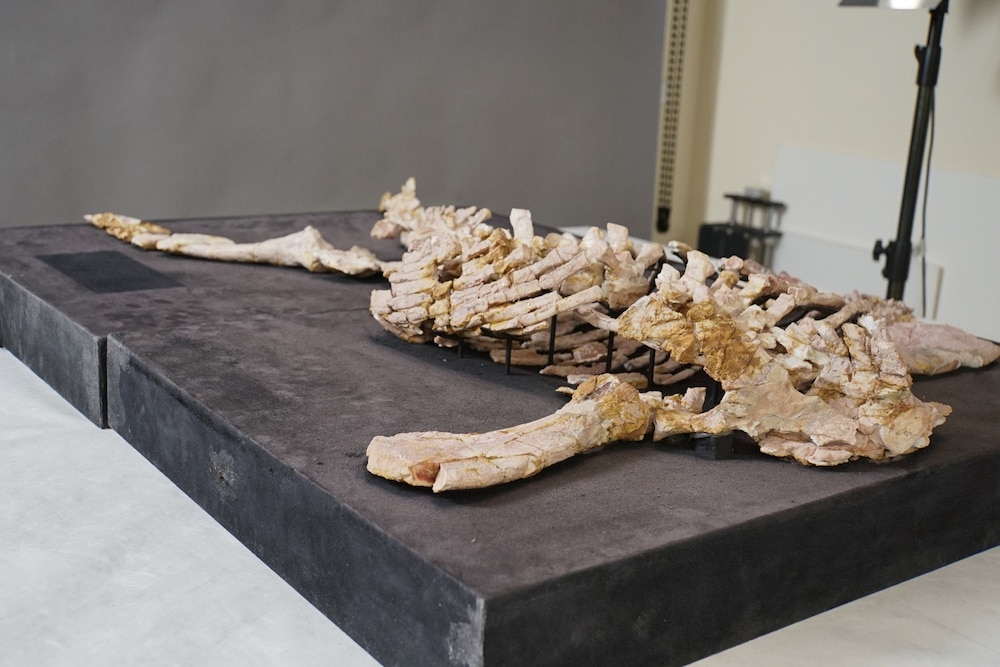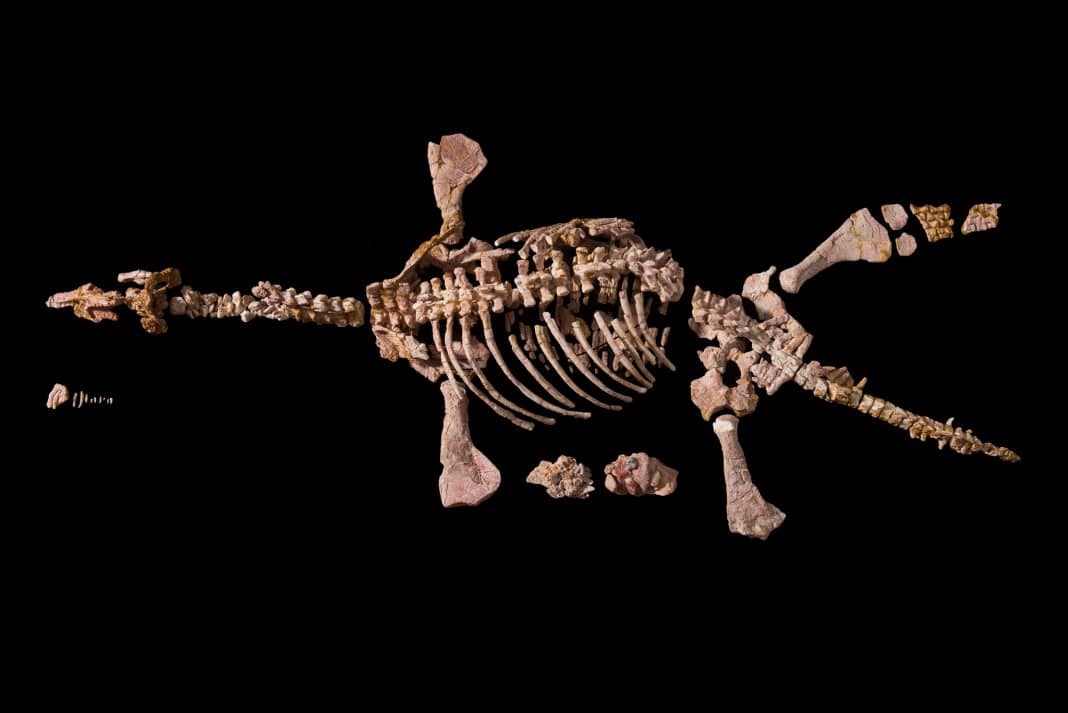For the first time in Australia, scientists at the Australian National University (ANU) and the Australian Museum Research Institute (AMRI) have used X-rays to look inside the gut of a prehistoric marine reptile: Umoonsaurus demoscyllus, an Early Cretaceous plesiosaur that grew up to two and a half metres long, and lived in Australian waters during the time of the dinosaurs (circa 100.5 to 125 million years ago).
The plesiosaur (named “Eric” after a Monty Python song) was discovered in the opal mines in Coober Pedy in South Australia in 1987. The prehistoric predator is on display at the Australian Museum in Sydney.
The researchers used micro-CT scans to peer inside the plesiosaur’s fossilised stomach remains to determine what the creature ate shortly before it died.
The researchers found 17 previously undescribed fish vertebrae inside Eric’s gut, confirming the plesiosaur mostly ate fish – reinforcing findings from studies in 2006.
According to the researchers, the study demonstrates X-rays’ potential to reconstruct the diets of other extinct organisms that inhabited Earth hundreds of millions of years ago.

“Previous studies examined the exterior surface of Eric’s opalised skeleton to find clues,” PhD researcher Joshua White, from the ANU Research School of Physics and the AMRI, said.
“But this approach can be difficult and limiting as fossilised stomach contents are rare to find and there can be more hidden beneath the surface that would be near impossible for palaeontologists to see without destroying the fossil.
“We believe our study is the first in Australia to use X-rays to study the gut contents of a prehistoric marine reptile.
“Our research employed very powerful X-rays to help us see the animal’s stomach contents in never-before-seen detail, including finding fish bones in its gut.
“The benefit of using X-rays to study these prehistoric animals is that it does not damage the fossil, which is incredibly important when dealing with valuable and delicate specimens such as Eric.”
Mr White sifted through mountains of data and CT imagery to differentiate between what he believed to be evidence of fish bones, gastroliths (also known as stomach stones), and other materials that the reptile had consumed. The data was used to create a 3D model of Eric’s gut contents.

“Eric was a mid-tier predator, sort of like a sea lion equivalent, that ate small fish and was likely preyed upon by larger, apex predators,” Mr White said.
“We are also lucky in the sense that Eric is one of the most complete opalised vertebrae skeletons in Australia. The fossil is approximately 93 per cent complete, which is pretty much unheard of in any fossil record.
“There is practically nowhere else other than Australia that can actually get opalised vertebrae fossils.”
The ANU scientists say learning more about the diet of extinct organisms is an important step in understanding their evolutionary past, and it can also help them understand how climate change might affect animals alive today.
“As environments change, so too does a marine reptile’s diet,” Mr White said. “Understanding these changes can be used to help predict how animals of today will respond to current and emerging climate challenges.
“If there’s any change to an animal’s diet, we want to look at why this change occurred. By some measure, we can compare this to modern animals such as dolphins or whales, and try to predict how their diets might change due to climate change, and why.”
The research is published in Alcheringa: An Australasian Journal of Palaeontology.



